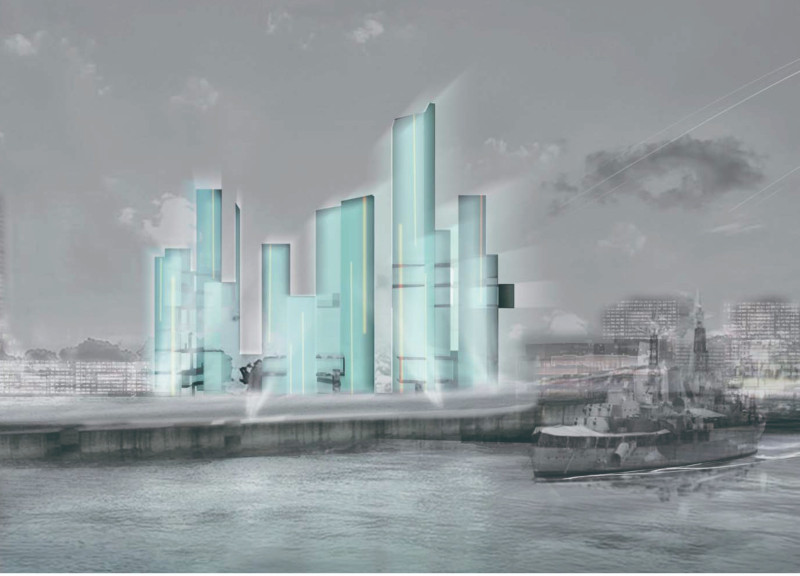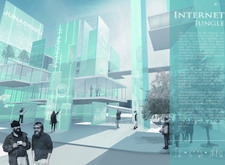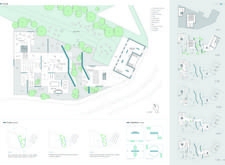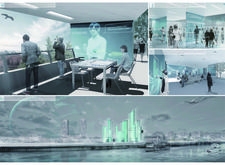5 key facts about this project
Functionally, the "Internet Jungle" operates as a cultural hub where individuals can explore the impacts of the internet on daily life, technological advancement, and cultural exchange. This museum is designed to cater to a broad audience, from students and academics to technology enthusiasts and casual visitors. Key components of the project include dedicated exhibition spaces that showcase the evolution of the internet and its influence on society. These areas will not only display artifacts and interactive exhibitions but also house forums for discussions and workshops, facilitating knowledge exchange among users.
A notable aspect of this architectural design is its emphasis on openness and transparency. The layout features an open floor plan, allowing visitors to navigate the space freely and interact with various exhibits and activities conveniently. Transparent elements, such as large glass facades and screens, create a continuous dialogue between the museum and its surroundings, inviting passersby to engage with the content on display. This integration with the urban environment reinforces the museum's role as a community focal point and an accessible source of information.
Moreover, the project employs cutting-edge materials and construction techniques that enhance its aesthetic and functional qualities. Predominantly featuring glass, metal, steel, and concrete, the material palette is intended to reflect modernity and durability. The extensive use of glass allows for ample natural light, fostering a sense of openness and connection with the outside world. The metal and steel elements provide structural integrity while contributing to contemporary design sensibilities. Concrete serves as a robust foundation, ensuring the museum’s longevity as it adapts to the evolving demands of its users.
Interactive screens play a significant role in the design, allowing for dynamic engagement with visitors. These screens act as interfaces for activities, showcasing more than just static information. They provide real-time updates and can feature artistic installations that reflect the continuous changes in the world of the internet. This feature not only enriches the visitor experience but also emphasizes the museum's core message: that information is fluid and ever-changing, much like the digital landscape itself.
The site selection in London further enhances the project's relevance. The dense urban context provides a strategic advantage for high foot traffic, ensuring the museum becomes a vital part of the city’s fabric. The integration of pathways and connections to public transport strengthens accessibility, welcoming visitors from various backgrounds. Such strategic placement ensures the project aligns with the community's needs while promoting frequent engagement with the museum's offerings.
Sustainability is also a crucial consideration in the "Internet Jungle" design. By incorporating green roofs and urban gardens, the project reflects a commitment to improving biodiversity in an urban setting. Passive solar heating and natural ventilation strategies are evident in the building’s orientation and façade design, illustrating a holistic approach to environmental responsibility.
Overall, the "Internet Jungle" project exemplifies thoughtful architectural design that merges the physical and digital worlds through its innovative layout and strategic use of materials. By emphasizing connectivity, transparency, and community engagement, this museum not only documents the history and impact of the internet but also provides a platform for future discourse on digital culture. For further insights and a deeper understanding of the architectural plans, sections, and designs, readers are encouraged to explore the project presentation in detail.


























